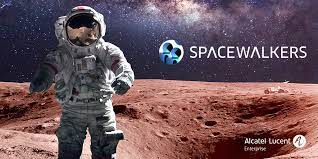-
WASHINGTON: India Now Second-Largest Source Country For New Citizens In US- Report - 15 hours ago
-
LONDON: Indian-Origin Teen In UK Gets “Life-Changing” Cancer Treatment - April 25, 2024
-
SILICON VALLEY: All About Pavan Davuluri, New Head Of Microsoft Windows - April 25, 2024
-
LONDON: UK’s India Gate To Commemorate Role Of Indian Soldiers From World Wars - April 24, 2024
-
HARARE: Shri Bramha Kumar appointed as the next Ambassador of India to the Republic of Zimbabwe - April 23, 2024
-
LONDON: Indian-Origin Principal Wins UK Legal Challenge Over School Prayer Ban - April 23, 2024
-
TORONTO: Indian-Origin Doctor Needs ₹ 2 Crore For Legal Fees. Elon Musk Responds - April 22, 2024
-
KINSHASA: India-Democratic Republic of Congo Foreign Office Consultations - April 21, 2024
-
LONDON: UK Court Allows Sale Of Nirav Modi’s Luxury London Apartment - April 21, 2024
-
TEHRAN: Travel advisory for Iran and Israel - April 20, 2024
TOKYO: Spacewalkers take extra safety precautions for toxic ammonia
TOKYO: Spacewalking astronauts had to
take extra safety precautions Saturday after possibly getting toxic ammonia on
their suits from the International Space Station’s external cooling system.
Victor
Glover and Mike Hopkins had no trouble removing and venting a couple of old
jumper cables to remove any ammonia still lingering in the lines. But so much
ammonia spewed out of the first hose that Mission Control worried some of the
frozen white flakes might have gotten on their suits.
Hopkins
was surprised at the amount of ammonia unleashed into the vacuum of space. “Oh
yeah, look at that go. Did you see that?” he asked flight controllers.
“There’s more than I thought.”
Even though
the stream of ammonia was directed away from the astronauts and the space
station, Hopkins said some icy crystals may have contacted his helmet. As a
result, Mission Control said it was going to “be conservative” and require
inspections.
The
astronauts’ first suit check found nothing amiss. “Looks clean,” Hopkins called
down.
Nasa did
not want any ammonia getting inside the space station and contaminating the
cabin atmosphere. The astronauts used long tools to vent the hoses and stayed
clear of the nozzles, to reduce the risk of ammonia contact. If necessary, the
spacewalkers could spend extra time basking in the sunlight before heading back
inside, to bake off any residue.
Once the
hoses were emptied, the astronauts moved one of them to a more central location
near the Nasa hatch, in case it’s needed on the opposite end of the station.
The
ammonia jumper cables were added years ago following a cooling system leak.
The hose
work should have been completed during a spacewalk a week ago, but was put off along
with other odd jobs when power upgrades took longer than expected.
























